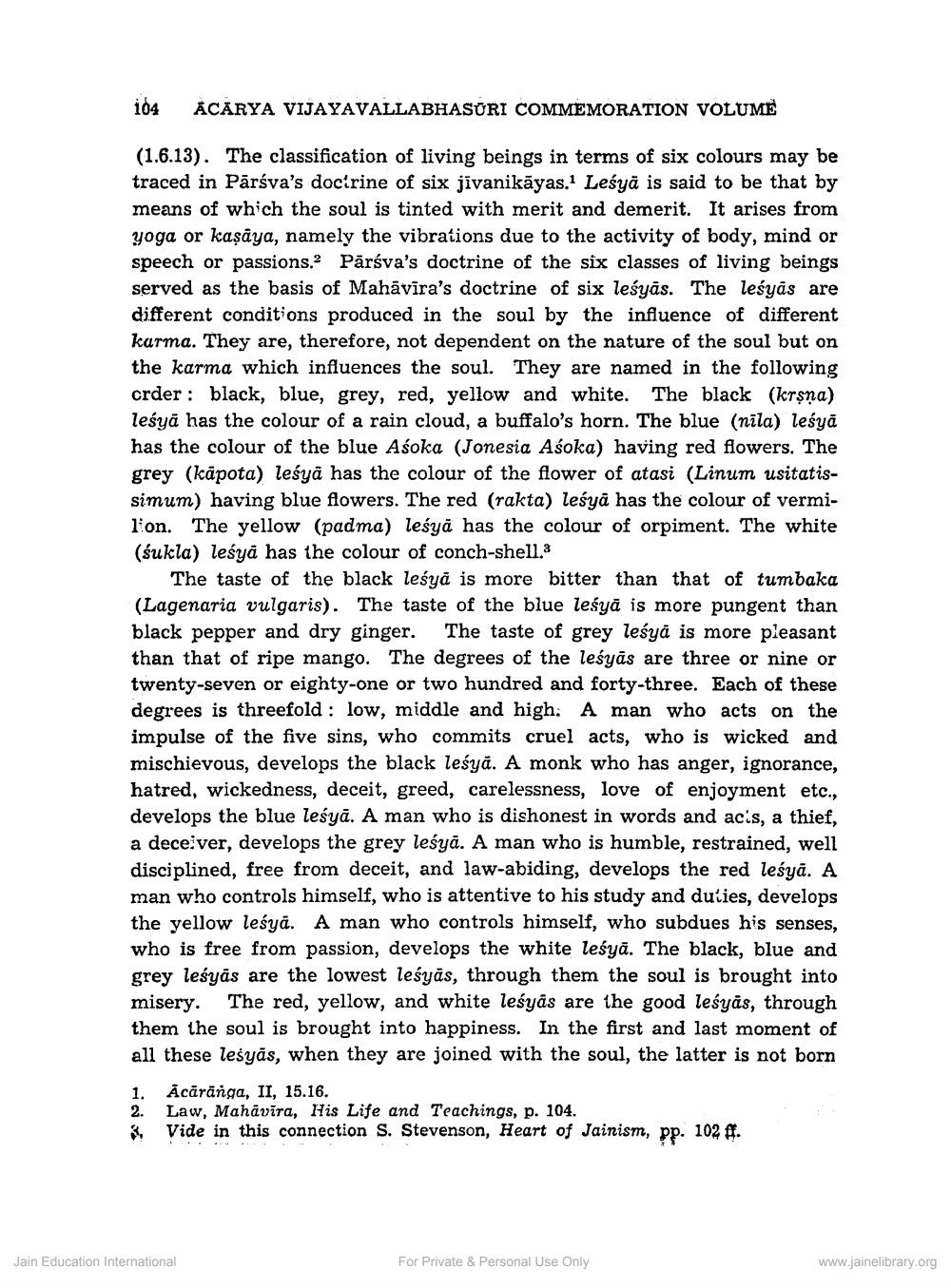________________
104
ACARYA VIJAYAVALLABHASORI COMMEMORATION VOLUME
(1.6.13). The classification of living beings in terms of six colours may be traced in Pārsva's doctrine of six jīvanikāyas. Leśyā is said to be that by means of which the soul is tinted with merit and demerit. It arises from yoga or kaşaya, namely the vibrations due to the activity of body, mind or speech or passions. Pārsva's doctrine of the six classes of living beings served as the basis of Mahāvīra's doctrine of six leśyās. The leśyās are different conditions produced in the soul by the influence of different karma. They are, therefore, not dependent on the nature of the soul but on the karma which influences the soul. They are named in the following crder: black, blue, grey, red, yellow and white. The black (krsna) leśyā has the colour of a rain cloud, a buffalo's horn. The blue (nila) leśyā has the colour of the blue Asoka (Jonesia Asoka) having red flowers. The grey (kāpota) leśyā has the colour of the flower of atasi (Linum usitatissimum) having blue flowers. The red (rakta) leśyā has the colour of vermilon. The yellow (padma) leśyā has the colour of orpiment. The white (śukla) leśya has the colour of conch-shell.
The taste of the black leśyā is more bitter than that of tumbaka (Lagenaria vulgaris). The taste of the blue leśyā is more pungent than black pepper and dry ginger. The taste of grey leśya is more pleasant than that of ripe mango. The degrees of the leśyās are three or nine or twenty-seven or eighty-one or two hundred and forty-three. Each of these degrees is threefold : low, middle and high. A man who acts on the impulse of the five sins, who commits cruel acts, who is wicked and mischievous, develops the black leśya. A monk who has anger, ignorance, hatred, wickedness, deceit, greed, carelessness, love of enjoyment etc., develops the blue leśyā. A man who is dishonest in words and acis, a thief, a deceiver, develops the grey leśyā. A man who is humble, restrained, well disciplined, free from deceit, and law-abiding, develops the red leśya. A man who controls himself, who is attentive to his study and duties, develops the yellow leśya. A man who controls himself, who subdues his senses, who is free from passion, develops the white leśyā. The black, blue and grey leśyās are the lowest leśyās, through them the soul is brought into misery. The red, yellow, and white leśyās are the good leśyās, through them the soul is brought into happiness. In the first and last moment of all these lesyās, when they are joined with the soul, the latter is not born
1.
Acaränga, II, 15.16. Law, Mahavira, His Life and Teachings, p. 104. Vide in this connection S. Stevenson, Heart of Jainism, pp. 102 ff.
3,
Jain Education International
For Private & Personal Use Only
www.jainelibrary.org




